
Gertrude van der Oosten (or Gertrude of Delft; died 6 January 1358) was a Dutch Beguine who was considered a mystic and had received the Stigmata.

Gertrude van der Oosten (or Gertrude of Delft; died 6 January 1358) was a Dutch Beguine who was considered a mystic and had received the Stigmata.
Gertrude was born in Voorburcht in the County of Holland, to peasant parents, and entered domestic service at Delft. Her surname of van Ooten, or "of the East", came from her custom of singing a hymn which began: Het daghet in den Oosten, i.e., "Daylight breaks in the East", which she is thought to have composed herself.
After living a pious life for many years and being jilted by her fiancé, [1] Gertrude obtained admission into the beguinage in Delft. Here, though not a nun, or bound by religious vows, she profited by the ample opportunities for contemplation afforded by life in this community. She had great devotion to the mysteries of the Incarnation, especially to the Passion of Christ. She is believed to have received the Stigmata in the Good Friday of the year 1340: [1] "while she lay prostrate before a crucifix, red blood began to gush from her hands, feet, and side and continued to do so seven times that day for every canonical hour, and for days after." [2] She begged God that this grace might be withdrawn, and her prayer was granted to the degree that the blood ceased to flow, but the marks of the Stigmata remained. [2] At the same time she displayed the gift of prophecy.
According to the hagiography, her breast became filled with milk when she meditated on the Nativity of Jesus. [3]
Gertrude died in Delft on the feast day of the Epiphany and was buried in the Church of St. Hippolytus in Delft, as that beguinage did not have its own church or cemetery. Her name has never been inscribed in the Roman Martyrology , though she is commemorated in various others, and her cultus is a purely local one.

Catherine of Siena, TOSD was an Italian member of the Third Order of Saint Dominic in the Roman Catholic Church. She was a mystic, activist, and author who had a great influence on Italian literature and on the Catholic Church. Canonized in 1461, she is also a Doctor of the Church.

Delft is a city and municipality in the province of South Holland, Netherlands. It is located between Rotterdam, to the southeast, and The Hague, to the northwest. Together with them, it is part of both the Rotterdam–The Hague metropolitan area and the Randstad.

Hildegard of Bingen, also known as Saint Hildegard and the Sibyl of the Rhine, was a German Benedictine abbess and polymath active as a writer, composer, philosopher, mystic, visionary, and as a medical writer and practitioner during the High Middle Ages. She is one of the best-known composers of sacred monophony, as well as the most recorded in modern history. She has been considered by scholars to be the founder of scientific natural history in Germany.

Stigmata, in Roman Catholicism, are bodily wounds, scars and pain which appear in locations corresponding to the crucifixion wounds of Jesus Christ: the hands, wrists, and feet.
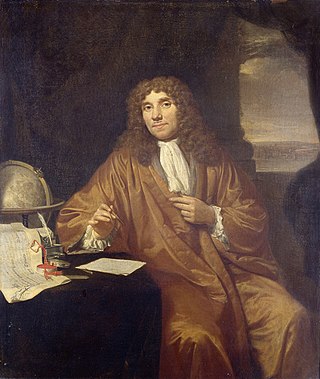
Antonie Philips van Leeuwenhoek was a Dutch microbiologist and microscopist in the Golden Age of Dutch science and technology. A largely self-taught man in science, he is commonly known as "the Father of Microbiology", and one of the first microscopists and microbiologists. Van Leeuwenhoek is best known for his pioneering work in microscopy and for his contributions toward the establishment of microbiology as a scientific discipline.

Johannes Vermeer was a Dutch Baroque Period painter who specialized in domestic interior scenes of middle-class life. During his lifetime, he was a moderately successful provincial genre painter, recognized in Delft and The Hague. Nonetheless, he produced relatively few paintings and evidently was not wealthy, leaving his wife and children in debt at his death.

William the Silent, also known as William the Taciturn, or, more commonly in the Netherlands, William of Orange, was the main leader of the Dutch revolt against the Spanish Habsburgs that set off the Eighty Years' War (1568–1648) and resulted in the formal independence of the United Provinces in 1648. Born into the House of Nassau, he became Prince of Orange in 1544 and is thereby the founder of the Orange-Nassau branch and the ancestor of the monarchy of the Netherlands. In the Netherlands, he is also known as Father of the Fatherland.

Saint Gudula was born in the pagus of Brabant. According to her 11th-century biography, written by a monk of the abbey of Hautmont between 1048 and 1051, she was the daughter of a duke of Lotharingia called Witger and Amalberga of Maubeuge. She died between 680 and 714.
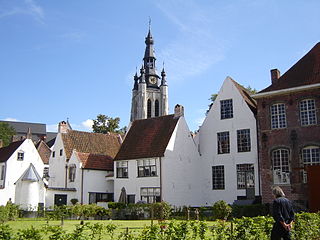
A beguinage, from the French term béguinage, is an architectural complex which was created to house beguines: lay religious women who lived in community without taking vows or retiring from the world.

Gertrude the Great, OSB was a German Benedictine nun and mystic. She is recognized as a saint by the Catholic Church and figures in the General Roman Calendar on November 16 for optional celebration as a memorial throughout the Roman Rite.

Therese Neumann was a German Catholic mystic and stigmatic.

The Beguines and the Beghards were Christian lay religious orders that were active in Western Europe, particularly in the Low Countries, in the 13th–16th centuries. Their members lived in semi-monastic communities but did not take formal religious vows; although they promised not to marry "as long as they lived as Beguines," to quote one of the early Rules, they were free to leave at any time. Beguines were part of a larger spiritual revival movement of the 13th century that stressed imitation of Jesus' life through voluntary poverty, care of the poor and sick, and religious devotion.
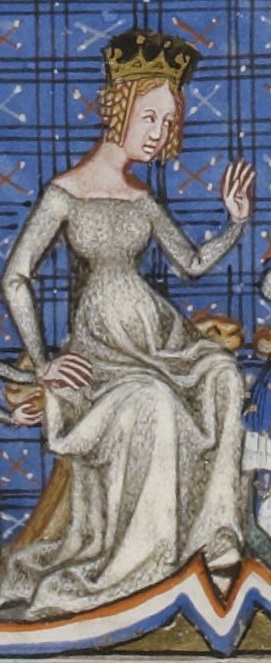
Bertha of Holland, also known as Berthe or Bertha of Frisia and erroneously as Berta or Bertrada, was Queen of France from 1072 until 1092, as the first wife of King Philip I of France. Bertha's marriage to the king in 1072 was a result of peace negotiations between him and her stepfather, Count Robert I of Flanders. After nine years of childlessness, the royal couple had three children, including Philip's successor, Louis VI. Philip, however, grew tired of his wife by 1090, and repudiated her in 1092 in order to marry the already married Bertrade of Montfort. That marriage was a scandal since both Philip and Bertrade were already married to other people, at least until Queen Bertha died the next year.

Lidwina (1380–1433) was a Dutch mystic who is honored as a saint by the Catholic Church. She is the patron saint of the town of Schiedam, of chronic pain, and of ice skating.

Lucas Faydherbe was a Flemish sculptor and architect who played a major role in the development of the High Baroque in the Southern Netherlands.

Agneta Wilhelmina Johanna van Marken-Matthes was a Dutch entrepreneur. She and her husband Jacques van Marken were involved in the manufacture of yeast throughout their lives, and were engaged in the co-operative movement, taking care of their workers. Matthes and Van Marken created living quarters for workers in her hometown, Delft in South Holland, named Agnetapark after her. These are considered a model for the co-operative development and construction of garden cities for workers. Matthes founded and ran a Delft perfume factory, Maison Neuve, to take advantage of a by-product from the yeast factory.
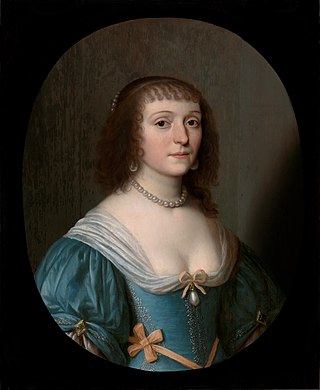
Princess Mauritia Eleonora of Portugal, Dutch: Prinses Mauritia Eleonora van Portugal, was a princess from the House of Aviz. As a close relative of Prince Frederick Henry of Orange, she spent a long time at his court in The Hague. Later in life she married a count from the House of Nassau-Siegen.

Bruges is the capital and largest city of the province of West Flanders in the Flemish Region of Belgium, in the northwest of the country, and the sixth-largest city of the country by population.
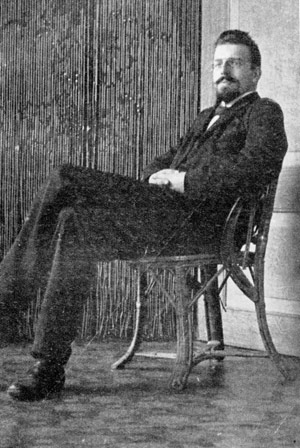
Aart van der Leeuw was a Dutch writer of prose fiction and poetry. His reputation rests mostly on two novels, Ik en mijn speelman (1927) and De kleine Rudolf (1930).

Maria Petyt, also Petijt or Petiyt (1623–1677), was known as a "great mystic", Her writings have been cited as "unequaled in volume and mystical content within the historical context of the Flemish-speaking 17th century."